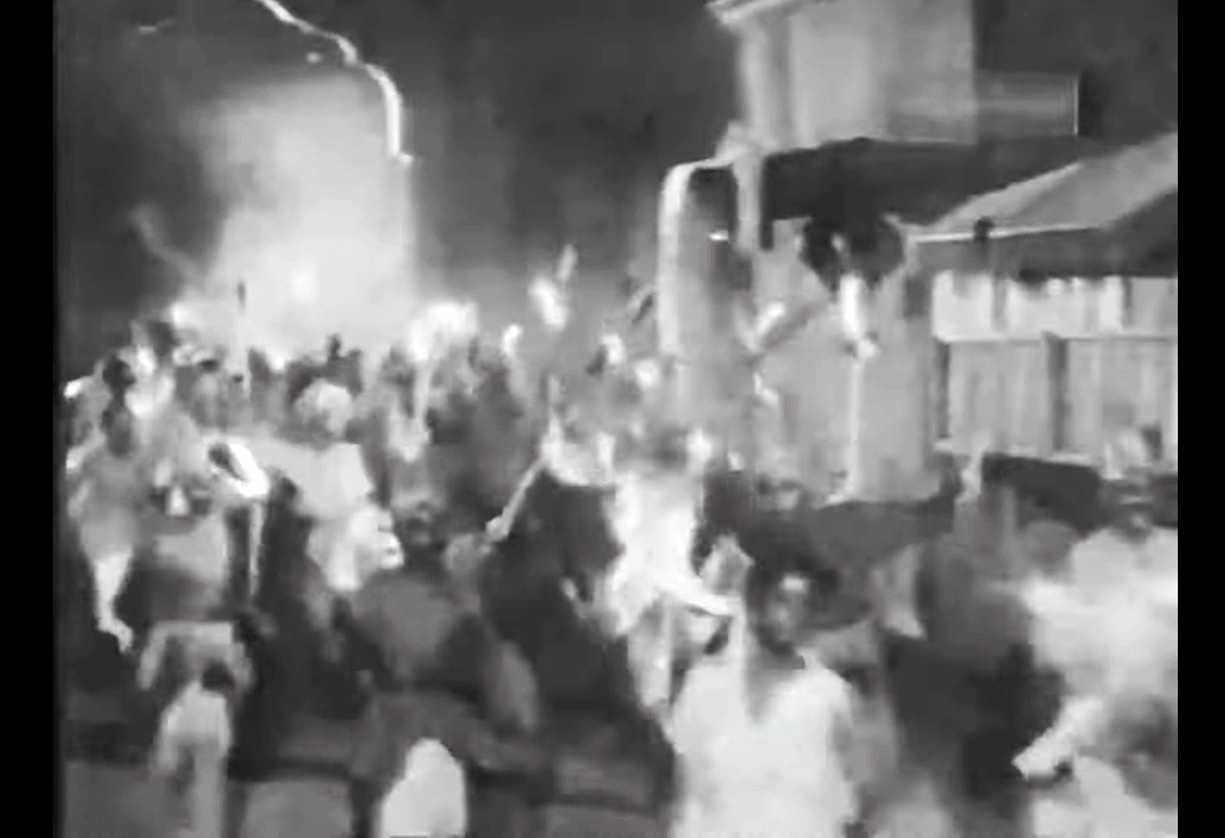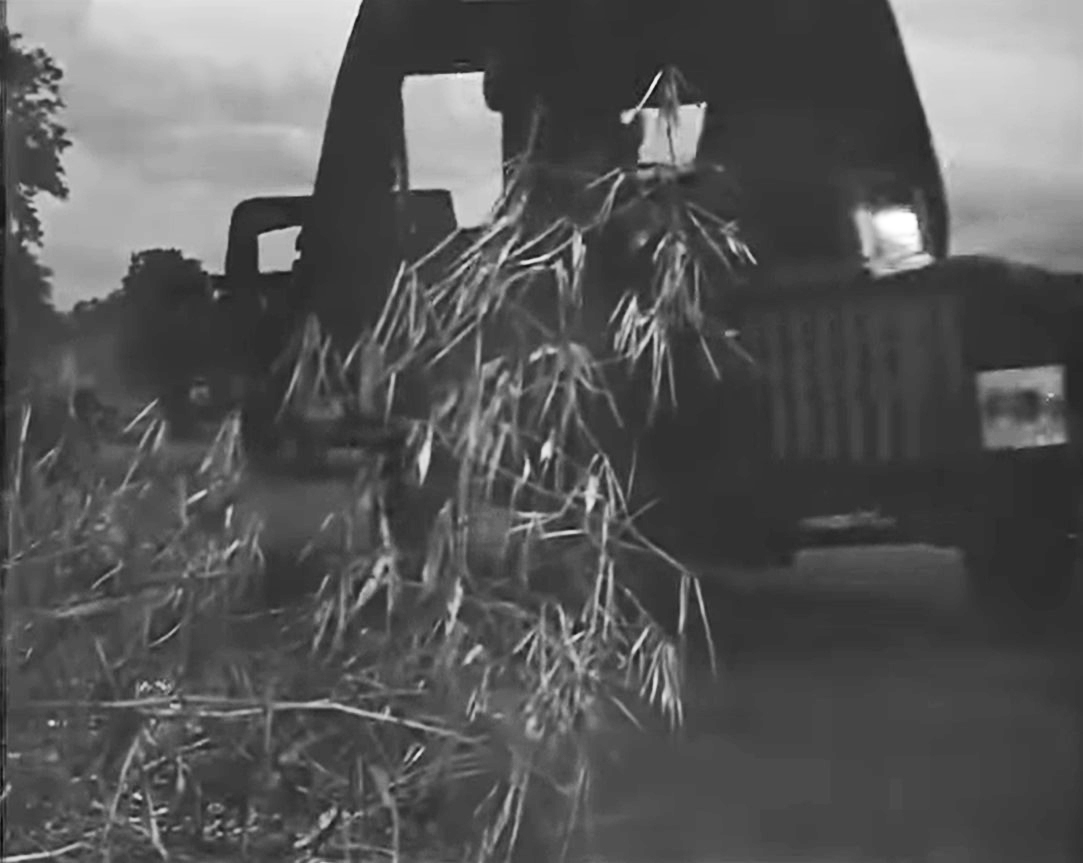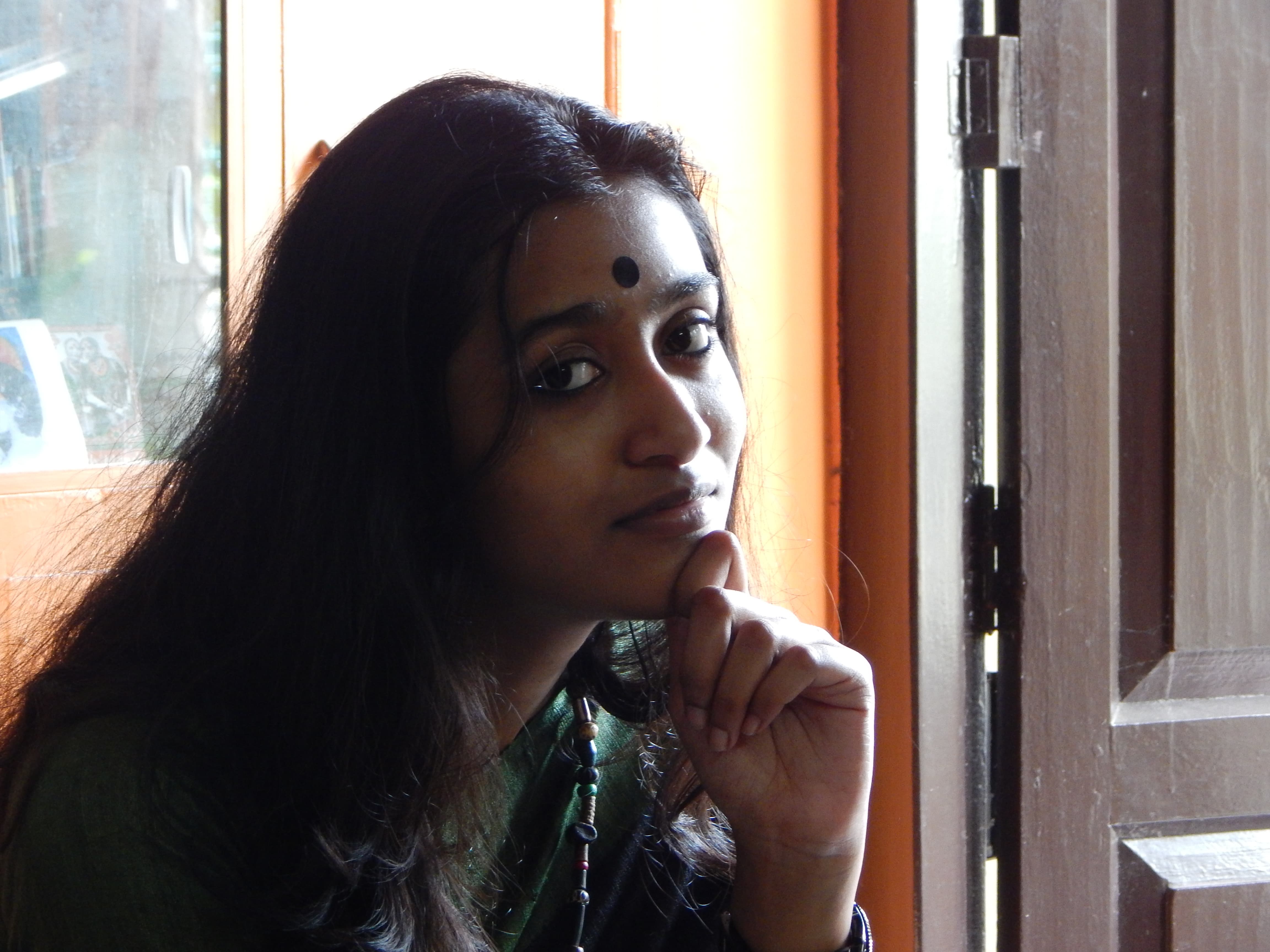
Bengal has never been short of reasons to boast about being a vanguard of India’s freedom movement. Has its cinema since the pre-independence era till today equally done justice to the depiction of the struggle? In a two-part article, SRAGDHARAMALINI DAS chronicles the eight decades of chanting the freedom struggle mantra in Bengali cinema. This is the first part of the article.
Why BFA commissioned this piece:
On the auspicious moment of the closing ceremony of our 75 years of independence, BFA wanted to revisit the genre of patriotic films in Bengal. BFA also thought it to be important to look at how the representation of freedom struggle in Bengali screen went through changes over the decades, if at all. We are happy to present the first part of the article on the day (9th August) which marked the beginning of the Quit India movement
The opening black screen of Sabyasachi (1977), the cinematic adaptation of Sarat Chandra Chattopadhyay’s provocative novel Pather Dabi (1926) [The Right of Way], is accompanied by cries of Vande Mataram – I praise Thee, Mother. Shortly, the credits begin to roll against the background image of a small hangman’s noose as instrumental versions of well-known nationalistic songs like Durgam Giri Kantar Moru (Impregnable Mountains-Forests-Deserts), Ekbar Biday De Ma (Bid Me Farewell This Once, Mother), and Ami Bhoy Korbo Na (I Shall Not Be Afraid) play. Meanwhile, the noose continues to grow bigger until it occupies the entire screen before dissolving into the map of pre-Independence India. Thus, at the very onset of the film, a transitive relationship is established amongst patriotic songs and chants, self-sacrifice (symbolized by the noose, which notoriously caused the death of endless freedom fighters), and the motherland. Indeed, such a close imbrication of the cultural and the political field is explicitly laid out in Sabyasachi when near the end of the film, an artistically inclined man is encouraged to compose invigorating songs of rebellion instead of directly joining a revolutionary group, suggesting that the former activity is at par with the latter. Truly, it is songs like those mentioned above, and especially Bankim Chandra Chattopadhyay’s famous Vande Mataram (adopted as the national song of India in 1950), that remain an unchanging ingredient of all the Bengali films that have depicted the Indian Freedom Struggle (1857-1947) over the decades, even as the depiction itself has evolved in many ways.

Silence! The British Are in the Nation: The Purging of Seditious Strains in the Pre-Independence Era
In The Age of Extremes (1994), the British historian Eric Hobsbawm wrote: “Never had a larger area of the globe been under the formal or informal control of Britain than between the two world wars, but never before had the rulers of Britain felt less confident about maintaining their old imperial superiority.” By the end of World War I, not only was America rising as a superior global force economically, but also in the realm of cinema. Film Scholar Priya Jaikumar discusses that in order to galvanize its domestic film industry, the colonial empire subsequently passed the Cinematograph Films Act (or Quota Act) of 1927 that potentially extended concessions to films produced within the entire British Empire, thereby including India. However, this was hardly reason enough for the filmmakers of the newborn Indian film industry to be overly enthusiastic because the pre-existing oppressive colonial structures of unequal film-tariff and media censorship, put into place by the Cinematograph Act of 1918, continued without any disruption. This Act was the cinematic counterpart of the earlier Dramatic Performances Act of 1876, meant to censor anticolonial sentiments from the visual media. Resultantly, much like the erstwhile dramatists, the new Indian filmmakers resorted to symbolic and mythological means to spread ideas of nationalism. This certainly meant that the number of films explicitly exploring contemporary scenes from the freedom struggle was next to null. The scenario started changing during post-War days. Films like Sangram (1938) [Struggle] by director Ardhendu Mukhopadhyay (who went on to make other films with nationalistic themes like Deshbandhu Chittaranjan (1970)); Vande Mataram (1946) by Sudhirbandhu; Pather Dabi (1947) by directors Digambar Chattopadhyay and Satish Dasgupta (known for the patriotic cinematic versions of Debi Chowdhurani (1949) (not the one starring Suchitra Sen) and Anandamath (1951) [The Abbey of Bliss]); and Desher Dabi (1947) [The Right of the Country] by Samar Ghosh. Film critic Amitava Nag notes that Bengal’s ironic failure to produce enough of such nationalistic films despite heralding countless anticolonial movements is not simply a result of the censorship threats but has equally to do with the disinterest of producers not wanting to disturb their dealings with the British administration.
However director Naresh Mitra managed to make Gora (1938) much earler, adapted from Rabindranath Thakur’s 1910 novel with the same title.
Film Scholar Priya Jaikumar discusses that in order to galvanize its domestic film industry, the colonial empire subsequently passed the Cinematograph Films Act (or Quota Act) of 1927 that potentially extended concessions to films produced within the entire British Empire, thereby including India
In its most daring moments, the film makes fun of the upper class/caste bhadralok Bengali man’s slavish attitude before their colonial counterparts either for maintaining their employment (chakri) or social status often at the cost of their self-respect. It also expends a considerable amount of time in capturing scenes of body-building by young men – an activity that had cropped up in Bengal ever since the formation of anticolonial groups in the region. In fact, Rabindranath’s niece, Sarala Devi, had herself set up a gymnasium for such purposes in 1902. Gora also comprised one of the earliest, though brief, cinematic depictions of the 1857 Sepoy Mutiny that arguably initiated the Indian Freedom Struggle proper, during which the protagonist’s Irish birth-mother died. It shows troupes of soldiers marching the streets, on foot and straddled on horses, armed with torches, sticks, and canons. The film relates the transformation in Gora’s blind adherence to the Hindutva ideology as he finally adopts the more egalitarian socio-religious tenets of Brahmoism, which Gora realizes is better suited to a land as diverse as India. While the film eschews any direct anti-colonial commentary, it does end with the politically-charged song Vande Mataram, being as attuned to the freedom struggle as it could under the nose of colonial regulation.

Scripting the Past: The Chronicling of Collective Anticolonial Struggle in the Early Years of Independence (1940s - 1960s)
Out of colonial vigilance, the Bengali filmmakers were free to depict the Indian Freedom Struggle after the nation gained independence in 1947. In fact, narrativizing the history of these revolutionary movements became necessary so that the newly formed nation-state could lay its claims to a shared past. The films that attempted this, however, faced two major challenges. First, there were many epistemological differences amongst Indian historians about the possibility of Indian nationalism having a distinct linear trajectory. Such disagreements were inevitable, given the wide range of ideologues (the Gandhians, the revolutionaries, the religious ideologues, the Socialists among others). This problem was somewhat resolved in these early movies by portraying characters discussing different available ideologies even as these films ultimately prioritize one of these. The second issue was a technical one: In order to depict the freedom movements, these films had to recreate the past, which naturally became increasingly difficult with the passage of time. Furthermore, the filmmakers had to choreograph believable battle scenes, which required an exorbitant amount of financial investment as well. In fact, Media Studies scholars Shaifat S. and Ahmed S. state that this very problem was confronted by the Bangladeshi filmmakers in the 1990s when they tried to cinematically portray the Liberation War of 1971. Interestingly, the solution to this problem was a natural extension from that to the first one — by filling up screen-time with activities leading up to or following the face offs, like discussions, travelling, apprehensions, verbal duals, torture, instead of the confrontations themselves.
The films of this era, most of which were dedicated to the many participants of the freedom struggle, generally employed different techniques to gain historical legitimacy. Frequently they incorporated voice or video recordings of actual nationalist leaders like Mahatma Gandhi, Jawaharlal Nehru, and Subhas Chandra Bose. Another key feature was the presence of an extra-diegetic narrator, usually, near the beginning and/or the end of a film, whose role was to brush up certain historical facts like the Battle of Plassey, the Anglo-Mysore Wars, the Sepoy Mutiny, and the death sentence of the teenager revolutionary Khudiram Bose, or to summarize the significance of the struggle in India’s later attainment of freedom for the audience, against images of either scenically appealing geographical features of the country, or that of the Indian flag (or its proto version). The glorification of the national flag at the onset of the movie also made certain scenes in the film, where the flag was disrespected by the British officers, more emotionally charged. Another common element was references to politically-charged books like Anandamath (1882), Sikher Bolidan (1925) and Pather Dabi (1926) by different characters in the film. Although all the films discussed in this article are centrally related to Bengal either in terms of space or ethnicity, without exception, all of them use mixes of English and Hindi to depict the cosmopolitan character of Bengal due to its colonial situation.
Gora also comprised one of the earliest, though brief, cinematic depictions of the 1857 Sepoy Mutiny that arguably initiated the Indian Freedom Struggle proper, during which the protagonist’s Irish birth-mother died
One of the most successful films of this period is Chattagram Astragar Lunthan (1949) [The Chattagram Armoury Raid]. Directed by Nirmal Chowdhury, Chattagram Astragar Lunthan (CAL) relates the incidents leading up to the Chattagram/Chittagong revolt of 1930 that was enacted under the leadership of the school teacher Master Da Surya Sen. The film centres around the two spaces that acted as the breeding ground of nationalism – the classroom, and the jungle. The space of the classroom is where the students are indoctrinated with nationalistic ideals and where after-school discussions transpire between nationalist leaders like Surya. The jungle, on the other hand, is the obscure space of refuge where the anticolonial runaways find shelter and strategize attacks. It is in spaces like these that the brave and stoic nature of the revolutionaries are repeatedly reproduced before the audience. CAL also raises the issue of revolution versus marriage by suggesting the former will always remain the priority in the lives of the freedom fighters. This subject plays out in the relationship between Surya and his wife, Pushpa. Throughout the film, Surya tries to edify Pushpa either through the means of a published collection of epistolary exchanges between the revolutionary leader Sri Aurobindo Ghose and his wife, Mrinalini Devi, where Aurobindo tries to draw Mrinalini into the fold of the freedom struggle, or by himself sending similar instructional letters to his wife, Pushpa — all in vain. Instead, Surya’s continued absence from his home increases Pushpa’s desolation to the extent that she attempts to commit suicide ironically using a noose (that the audience immediately associate with revolutionaries), albeit unsuccessfully, though halfway through the movie she dies in the presence of Surya, admitting that his words were correct. However, instead of any explicit scenes of grieving Pushpa’s death, the film immediately cuts to clips of Congress sessions, forcing the audience to shift their focus from the domestic anguish to the widespread pain of the nation, thereby instituting a clear hierarchy between revolution and domesticity. Additionally, women’s usual associated to the domestic sphere meant that they would only be able to enjoy limited importance in the freedom struggle. Subsequently, when Pritilata, one of the female associates of Surya, asks for a revolver during a fight with British officers, Surya refuses. Even though later Surya gives her the responsibility of leading a mission. She embraces death by ingesting a chemical compound (probably cyanide). One of the most interesting features of CAL is its uses of superimposition of multiple shots to evoke a sense of political chaos or to convey Surya’s psychological state of anxiety or despair.

British military jeeps moving through rural Bengal in 'Biyallish' (1951)
The film also deploys its songs in a meaningful manner: The first half of CAL, where Surya’s group uses relatively non-violent Gandhian methods, uses Rabindrasangeets like Oder Badhon Jotoi Sokto Hobe (The Stronger They Bind Us), while the latter half when the group prepares itself for armed revolution, Nazrulgeetis like Karar Oi Louho Kopat (That Iron Door of the Prison) is used, using the epithets of peaceful and rebellious generally associated with Rabindranath and Kazi Nazrul Islam, respectively. Finally, CAL uses visual techniques to advance freedom struggle as the necessary precursor of the Indian independence through the ending sequence where Surya is being hanged. Prior to being hanged, the character of Surya directly addresses the audience, telling them that his fight was not for Bengal alone but for the freedom of the entire nation. The hanging scene, however, is followed by the silhouette of Surya surrealistically walking across the spread of the ocean, towards the sky and the film ends with a fluttering Indian flag. This ending sequence suggests a linear causal relation between Surya’s death and the Indian independence, thereby instituting the Chittagong Armoury Raid as a key event of the Indian Freedom Struggle.
Set in a small town of Bengal, Biyallish also differs from Chattagram Astragar Lunthan (CAL) in the relatively more independence that it bestows upon women in the political realm. Unlike CAL, the revolutionaries of this film are followers of Gandhi, who was responsible for mass political participation of women all over India
Another significant film of this era was director Hemen Gupta’s Biyallish (1951) [Forty-Two] that revolves around the Quit India Movement of 1942. Hemen himself was a freedom fighter who also made Anandamath (1952) in Hindi. One major way in which Biyallish accentuated the norms of portrayal set by CAL was by exploring the interactive dynamics between the military and the revolutionary more extensively. The presence of the British military forces is embodied through the recurrence of jeeps that are repeatedly used to haunt, arrest, torture, and dispose the anticolonial revolutionaries. Set in a small town of Bengal, Biyallish also differs from CAL in the relatively more independence that it bestows upon women in the political realm, understandably so since unlike CAL, the revolutionaries of this film are followers of Gandhi, who was responsible for mass political participation of women all over India. Thus, the grandmother and the wife of the protagonist Ajoy are shown to be actively involved in strategizing and participating in the nationalistic movements spearheaded by Ajoy.

A scene from 'Neel Akasher Nichey' (1959) portraying Aa Lang's sexual assault by a Chinese landlord
However, this comes at the price of not just being shot by the police, but also being raped by them. Moreover, unlike CAL’s Surya, Ajoy is emotionally attachment to his family, which in turn is exploited by the police to stall his revolutionary activities. Such narrative elements once more suggest an incompatibility between domesticity and revolution by showing the dire results of upsetting this divide. Another aspect that Biyallish engages with through the entire length of the film is treachery by duplicitous fellow Indians who continuously betray the plans and locations of the revolutionaries. Therefore, the film warns the audience that in order to sustain the newly gained freedom of the country, they need to be alert about such native traitors, even as like most of the films of this era, Biyallish too ends with forwarding the nationwide revolution, in particular the Quit India Movement of 1942, as decisive factor resulting in Indian independence. Such comments reveal the tangible vulnerability of the Indian nation-state in its initial years, especially with the Communist party raising cries like "Ye Azadi Jhooti Hai". In fact, the film even addresses such slogans by saying that as long as free India is in its rudimentary state, its citizens should know better than to get into internal conflicts.
Mrinal Sen’s Neel Akasher Neechey (1959) was based on a short story called “Chini Feriwala” (The Chinese Hawker) by Mahadevi Varma, narrates the story of a Chinese peddler named Wang Lu who sells fabrics in Calcutta of the 1930s. Wang comes in contact with Basanti, a Bengali woman who is involved with nationalistic politics (initially much to the chagrin of her husband), and thereafter gets inspired to dedicate his life towards working for its own country China then facing the 1931 Japanese invasion. This Comintern-like idea of solidarity between India and China becomes especially evident in a scene where Wang initially tries to sell his wares to Basanti. When Basanti tells him that she doesn’t use foreign items, Wang points at his physiological features like his facial structure and the colour of his skin and eyes, repeating “hum no foh-en, hum Chinaman” (Me not foreigner, me Chinaman). Yet, what connects the Indian nationalist Basanti with the Chinese proto-nationalist Wang is not simply a brother-sister relationship that they broach, but a shared oppressive socio-political atmosphere that leads to the rape of women. If in Biyallish, it was the British military officers who attacked women involved with the revolutionary movement, then NAN shows flashbacks of a Chinese landlord raping his own sister Aa Lang, whom he is reminded of due to the presence of Basanti. Interestingly, actress Manju Dey who enacts in a scene of being assaulted in Biyallish, plays the role of the ‘sister’ Basanti in NAN, thereby justifying the resurfacing of Wang’s memories even in an extra-filmic manner.
Interestingly, actress Manju Dey who enacts in a scene of being assaulted in Biyallish, plays the role of the ‘sister’ Basanti in Neel Akasher Neechey (NAN). Thereby she justifies the resurfacing of Wang’s memories even in an extra-filmic manner
Moreover, it is noteworthy, that the scenes of assault from both the films use an aesthetics of heightened contrast between light and shadow, cinematically representing the murky eclipsing of morality. Near the end of the film, Basanti gets jailed. However, shots of the Presidency jail before which Wang often waits to see her shift into a Wang’s worried face as superimposed scenes of the Japanese attack on China flood the screen, resulting in Wang’s decision to serve his country much like Basanti. Thus, while Mrinal’s film aligns with the tendency of the Bengali films of this era to underscore the power of the Indian Freedom Struggle, it exceeds the same by depicting the struggle not only as a precursor to the Indian independence, but potentially that of an international socialist system.
(To be continued...)

